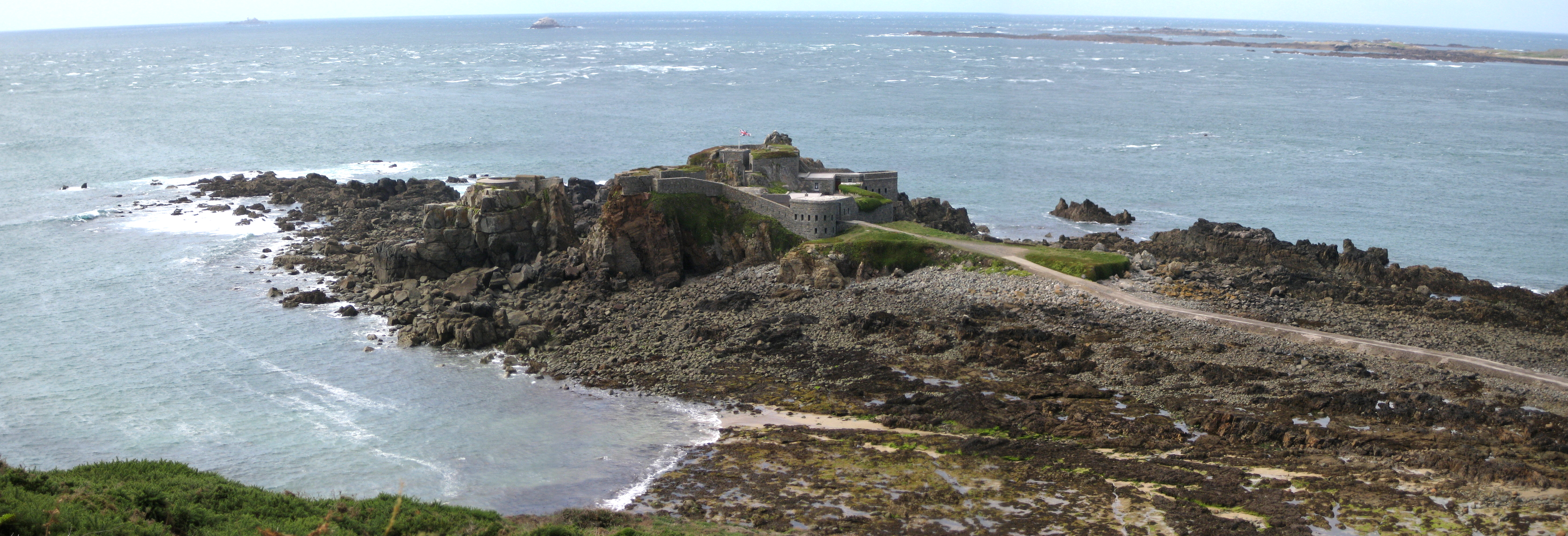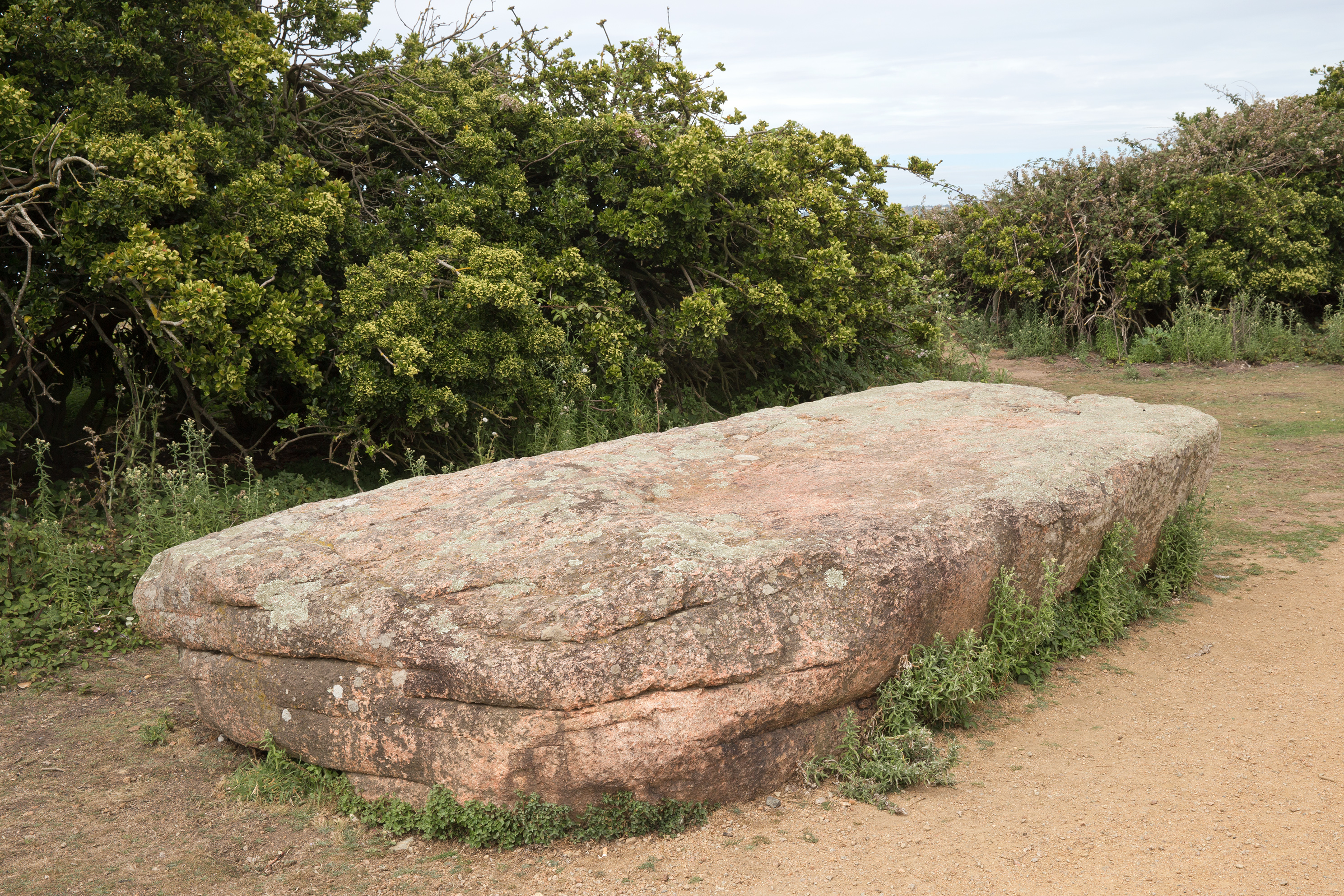|
Nicolle Tower
Nicolle Tower is a tower in the parish of St Clement in Jersey. It was built in 1821 for Philippe Nicolle as a hexagonal folly house on the site of an earlier navigation tower on Mont Ubé. It is adjacent to the Mont Ubé dolmen. During the occupation of the Channel Islands the German forces made some modifications to this tower, extending its height with a new top floor, including narrow windows, so that they could use the tower as an observation post. There are other structures near-by, including gun emplacements, and bunkers which were constructed during the occupation. The tower today Nicolle Tower is a listed building, restored and owned by the Landmark Trust, and is used as short-let holiday accommodation. External links References Buildings and structures in Saint Clement, Jersey Landmark Trust Towers in Jersey Listed buildings in Jersey Folly towers Towers completed in 1821 1821 establishments in the United Kingdom {{jersey-struct-stub ... [...More Info...] [...Related Items...] OR: [Wikipedia] [Google] [Baidu] |
Landmark Trust
The Landmark Trust is a British building conservation charity, founded in 1965 by Sir John and Lady Smith, that rescues buildings of historic interest or architectural merit and then makes them available for holiday rental. The Trust's headquarters is at Shottesbrooke in Berkshire. Most Trust properties are in England, Scotland and Wales. Several are on Lundy Island off the coast of north Devon, operated under lease from the National Trust. In continental Europe there are Landmark sites in Belgium, France and Italy. Five properties are in the United States — all in Vermont — one of which, Naulakha, was the home of Rudyard Kipling in the 1890s. The Trust is a charity registered in England & Wales and in Scotland. The American sites are owned by an independent sister charity, Landmark Trust USA. There is also an Irish Landmark Trust. Those who rent Landmarks provide a source of funds to support restoration costs and building maintenance. The first rentals were in 1967 when ... [...More Info...] [...Related Items...] OR: [Wikipedia] [Google] [Baidu] |
Saint Clement, Jersey
St Clement (Jèrriais: ''Saint Cliément'') is one of the twelve parishes of Jersey in the Channel Islands. Its parish hall is around south-east of St Helier. The parish has a population of 9,221 and is the second most densely populated. Located on the south-east coast of the island, stretching from Le Dicq in the west to near La Rocque in the east, it is the smallest parish, with a surface area of just 2,440 vergées (4 km2). The parish is largely suburbanised, with a large spread of post-war low-density housing development. There is no easily definable centre to the parish. The parish hall, schools and church are located in different areas. The parish is also home to a number of sports facilities, such as FB Fields and St Clement's Golf Club. Topynomy In pre-Norman times, the area now known as St Clement was known as ''Petravilla'' or ''Pierreville''. This is named for Peter, a monk who gave his lands in St Clement to the Mont Saint-Michel abbey. The modern parish der ... [...More Info...] [...Related Items...] OR: [Wikipedia] [Google] [Baidu] |
Jersey
Jersey ( , ; nrf, Jèrri, label=Jèrriais ), officially the Bailiwick of Jersey (french: Bailliage de Jersey, links=no; Jèrriais: ), is an island country and self-governing Crown Dependencies, Crown Dependency near the coast of north-west France. It is the largest of the Channel Islands and is from the Cotentin Peninsula in Normandy. The Bailiwick consists of the main island of Jersey and some surrounding uninhabited islands and rocks including Les Dirouilles, Écréhous, Les Écréhous, Minquiers, Les Minquiers, and Pierres de Lecq, Les Pierres de Lecq. Jersey was part of the Duchy of Normandy, whose dukes became kings of England from 1066. After Normandy was lost by the kings of England in the 13th century, and the ducal title surrendered to France, Jersey remained loyal to the The Crown, English Crown, though it never became part of the Kingdom of England. Jersey is a self-governing Parliamentary system, parliamentary democracy under a constitutional monarchy, with its ... [...More Info...] [...Related Items...] OR: [Wikipedia] [Google] [Baidu] |
Folly
In architecture, a folly is a building constructed primarily for decoration, but suggesting through its appearance some other purpose, or of such extravagant appearance that it transcends the range of usual garden buildings. Eighteenth-century English landscape gardening and French landscape gardening often featured mock Roman temples, symbolising classical virtues. Other 18th-century garden follies represented Chinese temples, Egyptian pyramids, ruined medieval castles or abbeys, or Tatar tents, to represent different continents or historical eras. Sometimes they represented rustic villages, mills, and cottages to symbolise rural virtues. Many follies, particularly during times of famine, such as the Great Famine (Ireland), Great Famine in Ireland, were built as a form of poor relief, to provide employment for peasants and unemployed artisans. In English, the term began as "a popular name for any costly structure considered to have shown wikt:folly#Noun, folly in the builde ... [...More Info...] [...Related Items...] OR: [Wikipedia] [Google] [Baidu] |
Jersey Dolmens
The dolmens of Jersey are neolithic sites, including dolmens, in Jersey. They range over a wide period, from around 4800 BC to 2250 BC, these dates covering the periods roughly designated as Neolithic, or “new stone age”, to Chalcolithic, or “copper age”. History of dolmens in Jersey By the time the dolmens came to be built, people were settled in Jersey, although it was still at that time connected by a land bridge to the continent of Europe (until around 6800 BC). The new stone age differs from the old in that stone tools were still used – axes, daggers etc. – but the community was now settled and farmed the land; they did not hunt and follow prey. Of their habitations, no trace remains; it is likely from the evidence found elsewhere that they had fairly basic wooden huts, sealed with mud and clay, which have been lost. Only the dolmens and menhirs remain. The Neolithic sites such as dolmens, passage graves, and the like used to be considered as primarily tombs of c ... [...More Info...] [...Related Items...] OR: [Wikipedia] [Google] [Baidu] |
Occupation Of The Channel Islands
The military occupation of the Channel Islands by Nazi Germany lasted for most of the Second World War, from 30 June 1940 until liberation on 9 May 1945. The Bailiwick of Jersey and Bailiwick of Guernsey are two island countries and British Crown dependencies in the English Channel, near the coast of Normandy. The Channel Islands were the only ''de jure'' part of the British Empire to be occupied by Nazi Germany during the war. However, Germany's allies, Italy and Japan also occupied British territories in Africa and Asia, respectively. Anticipating a swift victory over Britain, the occupying German forces initially experimented by using a moderate approach to the non-Jewish population, supported by local collaborators. However, as time progressed the situation grew gradually worse and ended in near starvation for both occupied and occupiers during the winter of 1944-45. Armed resistance by islanders to the German occupation was nearly non-existent. Many islanders were emp ... [...More Info...] [...Related Items...] OR: [Wikipedia] [Google] [Baidu] |
Wehrmacht
The ''Wehrmacht'' (, ) were the unified armed forces of Nazi Germany from 1935 to 1945. It consisted of the ''Heer'' (army), the ''Kriegsmarine'' (navy) and the ''Luftwaffe'' (air force). The designation "''Wehrmacht''" replaced the previously used term and was the manifestation of the Nazi regime's efforts to rearm Germany to a greater extent than the Treaty of Versailles permitted. After the Nazi rise to power in 1933, one of Adolf Hitler's most overt and audacious moves was to establish the ''Wehrmacht'', a modern offensively-capable armed force, fulfilling the Nazi régime's long-term goals of regaining lost territory as well as gaining new territory and dominating its neighbours. This required the reinstatement of conscription and massive investment and defense spending on the arms industry. The ''Wehrmacht'' formed the heart of Germany's politico-military power. In the early part of the Second World War, the ''Wehrmacht'' employed combined arms tactics (close-cover ... [...More Info...] [...Related Items...] OR: [Wikipedia] [Google] [Baidu] |
Observation Post
An observation post (commonly abbreviated OP), temporary or fixed, is a position from which soldiers can watch enemy movements, to warn of approaching soldiers (such as in trench warfare), or to direct fire. In strict military terminology, an observation post is ''any'' preselected position from which observations are to be made - this may include very temporary installations such as a vehicle parked as a roadside checkpoint, or even an airborne aircraft. (from a DoD news briefing. Accessed 2008-06-21.) Operation When selecting a (temporary) observation post, trained troops are to avoid ...[...More Info...] [...Related Items...] OR: [Wikipedia] [Google] [Baidu] |
Artillery Battery
In military organizations, an artillery battery is a unit or multiple systems of artillery, mortar systems, rocket artillery, multiple rocket launchers, surface-to-surface missiles, ballistic missiles, cruise missiles, etc., so grouped to facilitate better battlefield communication and command and control, as well as to provide dispersion for its constituent gunnery crews and their systems. The term is also used in a naval context to describe groups of guns on warships. Land usage Historically the term "battery" referred to a cluster of cannon in action as a group, either in a temporary field position during a battle or at the siege of a fortress or a city. Such batteries could be a mixture of cannon, howitzer, or mortar types. A siege could involve many batteries at different sites around the besieged place. The term also came to be used for a group of cannon in a fixed fortification, for coastal or frontier defence. During the 18th century "battery" began to be used as a ... [...More Info...] [...Related Items...] OR: [Wikipedia] [Google] [Baidu] |
Bunker
A bunker is a defensive military fortification designed to protect people and valued materials from falling bombs, artillery, or other attacks. Bunkers are almost always underground, in contrast to blockhouses which are mostly above ground. They were used extensively in World War I, World War II, and the Cold War for weapons facilities, command and control centers, and storage facilities. Bunkers can also be used as protection from tornadoes. Trench bunkers are small concrete structures, partly dug into the ground. Many artillery installations, especially for coastal artillery, have historically been protected by extensive bunker systems. Typical industrial bunkers include mining sites, food storage areas, dumps for materials, data storage, and sometimes living quarters. When a house is purpose-built with a bunker, the normal location is a reinforced below-ground bathroom with fiber-reinforced plastic shells. Bunkers deflect the blast wave from nearby explosions to prevent ... [...More Info...] [...Related Items...] OR: [Wikipedia] [Google] [Baidu] |
Listed Buildings In Jersey
There are a number of listed buildings in Jersey. These listed buildings, which includes structures such as pumps, range from castles to terraced houses. The list is controlled by the States of Jersey and is based on a system of historic environment protection. Grouville St Brélade St Clement St Helier St John St Lawrence St Martin St Mary St Ouen St Peter St Saviour Trinity References {{Reflist External links Listed buildings database Listed buildings in Jersey, Jersey-related lists ... [...More Info...] [...Related Items...] OR: [Wikipedia] [Google] [Baidu] |






